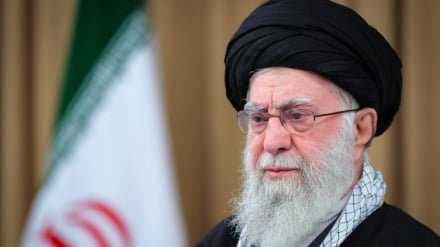Why U.S. is seeking to reduce military forces in Europe
-

U.S. military forces stationed in Europe
Pars Today – Washington has informed NATO member countries in Europe that it seeks to reduce the presence of its military forces on the continent.
According to Pars Today, Romania’s Ministry of Defense announced that Washington has informed this country and other NATO members that it intends to reduce the presence of its military forces in Europe. The reduction of U.S. troops in Europe is linked to the Pentagon’s effort to focus its presence on the Western Hemisphere and the Indo-Pacific region. This move is part of a broader process of reassessing the global posture of the United States Armed Forces.
In April 2025, several U.S. and European officials, whose names were not disclosed, reported that the U.S. Department of Defense (Pentagon) was considering a proposal to withdraw 10,000 troops from Eastern Europe. Under this proposed plan, half of the 20,000 military personnel that former U.S. President Joe Biden deployed in 2022 to bolster the defense of countries bordering Ukraine after the outbreak of the Ukraine war would be withdrawn from the region. Speculation suggests that 10,000 troops will be pulled out.
The withdrawal of U.S. military forces from Eastern Europe has raised concerns on both continents due to the alleged threats from Russia. Kaja Kallas, the European Union’s foreign policy chief, claimed in late January 2025 that Russia posed an “existential threat” to the continent’s security and that the only way to respond to this alleged threat is to increase military spending.
Boris Pistorius, Germany’s then-Defense Minister, also requested that his American counterpart provide a “roadmap” if the U.S. intends to redeploy its forces from Europe to the Indo-Pacific region. This roadmap should prevent gaps in capabilities, organize the withdrawal gradually, and clarify who is responsible for what tasks.
Regarding the reasons for the reduction of U.S. military forces in Europe, the following can be highlighted:
Reevaluation of strategic priorities
One of the main reasons for the reduction of U.S. military forces in Europe is the reevaluation of the country’s strategic priorities. After the end of the Cold War, the U.S. military presence in Europe was defined as a tool to contain threats from the Soviet Union and later Russia. However, with changing global threats and the emergence of challenges such as competition with China in Asia, the U.S. strategic focus has shifted toward the Indo-Pacific region. This shift in priorities has led Washington to transfer part of its military resources from Europe to other regions.
Reduction of military costs
The high costs of maintaining bases and military forces in Europe is another factor influencing the U.S. decision to reduce its military presence on the continent. Given domestic economic pressures and rising federal debt, the White House seeks to lower overseas military expenditures. Reducing the rotational deployment of military brigades in Eastern European countries such as Romania, Poland, Bulgaria, and Slovakia is considered part of this cost-saving policy.
Strengthening Europe’s defense capabilities
The U.S. also believes that European countries should take greater responsibility for their own security. In recent years, former U.S. President Donald Trump repeatedly urged NATO members to contribute a larger share of defense spending. The reduction of American forces can be seen as a tool to pressure European countries to enhance their independent defense capabilities and reduce reliance on the United States.
End of rotational missions
According to Romania’s Ministry of Defense, the U.S. decision to reduce forces does not mean a complete withdrawal, but rather the end of rotational missions for certain military brigades. These forces were temporarily stationed in various Eastern European countries and will now return to their main bases as their missions conclude. This move is part of the broader realignment of the U.S. military presence in Europe.
Efforts to reduce tensions with Russia
Another possible motivation for this decision is the effort to reduce tensions with Russia. The extensive deployment of U.S. forces along NATO’s eastern borders has always been viewed by Moscow as a direct threat. Reducing this presence could be interpreted as a confidence-building measure in the tense relations between Washington and Moscow, especially at a time when Europe is facing multiple security crises.
Summary
Overall, the reduction of U.S. military forces in Europe is the result of a combination of strategic, economic, and political factors. This decision reflects a shift in Washington’s security priorities, pressure on Europe to take greater responsibility, and efforts to manage geopolitical tensions with Russia. However, the move has raised concerns among some NATO member countries, particularly in Eastern Europe, about reduced U.S. military support and increased vulnerability to potential threats.


